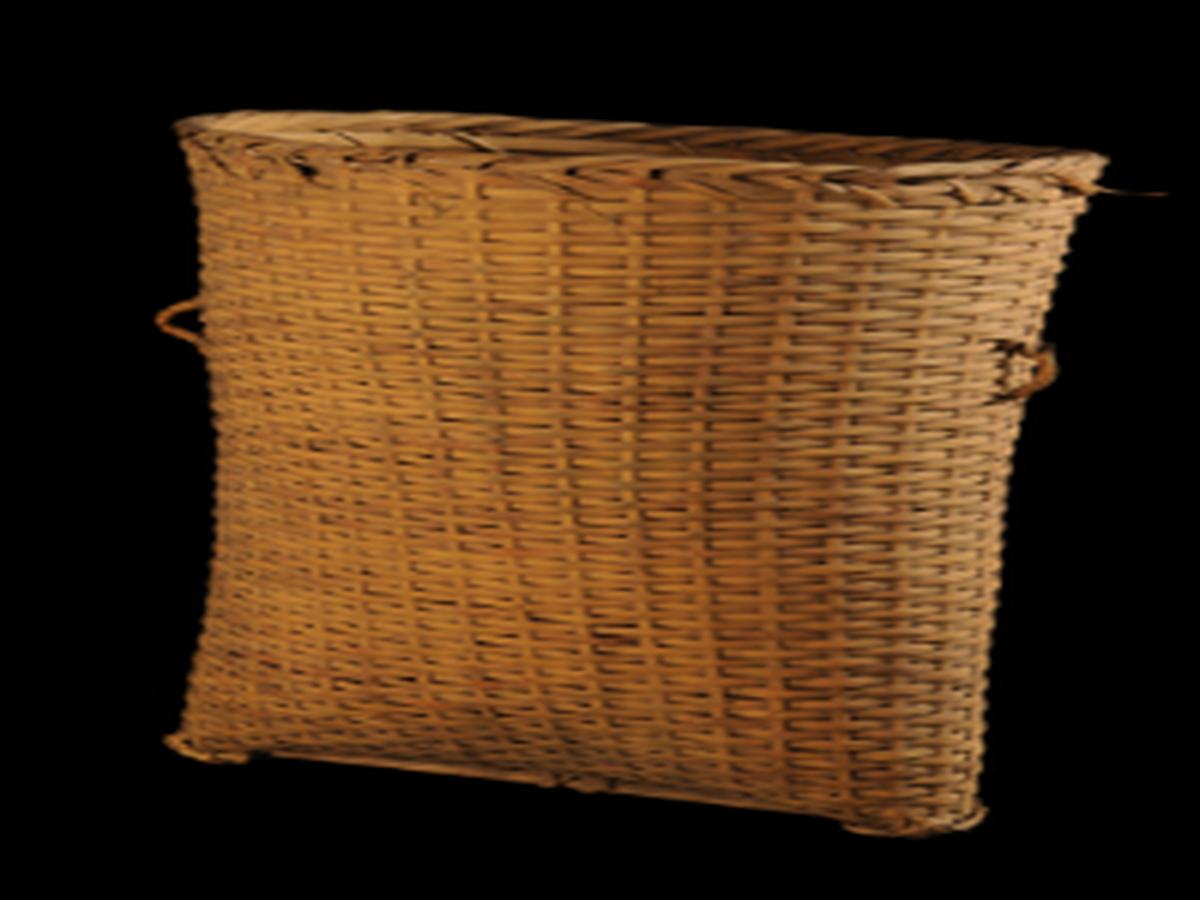State
Tribe Name
Art Type
short description
This basket spatially embodies the Tangkhul Naga, an indigenous tribe chiefly found in the Ukhrul district of Manipur in Northeast India, who made typical and utilitarian objects. The basket symbolizes, therefore, the tribe's footprints with nature and its ancient wisdom of bamboo and cane arts. Thin bamboo splints tightly interlaced on the body of the basket bestow it with great strength and durability. The rim around the wide circular mouth of the basket is reinforced with finely woven cane strips that confer strength and beauty. The design of this basket features a straight rectangular narrow base that allows greater stability for carrying rice and other grains: The wide mouth allows easy filling and the finely woven strips keep the contents tucked inside comfortably and stably for the bearer.
Thumbnail

Filter Postion
Left
Filter Background
Off
Theme
Filter Header Image

content
Image

description
This basket spatially embodies the Tangkhul Naga, an indigenous tribe chiefly found in the Ukhrul district of Manipur in Northeast India, who made typical and utilitarian objects. The basket symbolizes, therefore, the tribe's footprints with nature and its ancient wisdom of bamboo and cane arts. Thin bamboo splints tightly interlaced on the body of the basket bestow it with great strength and durability. The rim around the wide circular mouth of the basket is reinforced with finely woven cane strips that confer strength and beauty. The design of this basket features a straight rectangular narrow base that allows greater stability for carrying rice and other grains: The wide mouth allows easy filling and the finely woven strips keep the contents tucked inside comfortably and stably for the bearer.
Another salient feature of this basket consists of two strips of bamboo designed into small rectangular pads at two corners of the base. They work as buffers to protect the basket while on placement over harsh surfaces, hence giving functional durability. The basket possesses a wide mouth to allow easy filling, while the closely woven strips refuse to let the contents slip. The Tangkhul Naga have been using baskets for carrying rice from granaries to households, particularly during harvests or festivities. Strongf and artfully designed baskets hold great symbolic importance in the agrarian life of the tribe, Such baskets have found a place in the Indian Museum, Kolkata, where all matters related to the Tangkhul Naga"s sustainable practices and distinctive craftsmanship meet.
Another salient feature of this basket consists of two strips of bamboo designed into small rectangular pads at two corners of the base. They work as buffers to protect the basket while on placement over harsh surfaces, hence giving functional durability. The basket possesses a wide mouth to allow easy filling, while the closely woven strips refuse to let the contents slip. The Tangkhul Naga have been using baskets for carrying rice from granaries to households, particularly during harvests or festivities. Strongf and artfully designed baskets hold great symbolic importance in the agrarian life of the tribe, Such baskets have found a place in the Indian Museum, Kolkata, where all matters related to the Tangkhul Naga"s sustainable practices and distinctive craftsmanship meet.
Image Mode
landscape
promoted
On
Verified
Off
